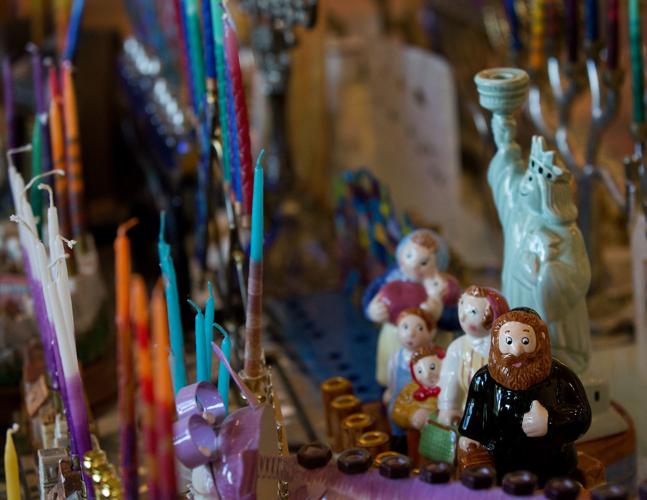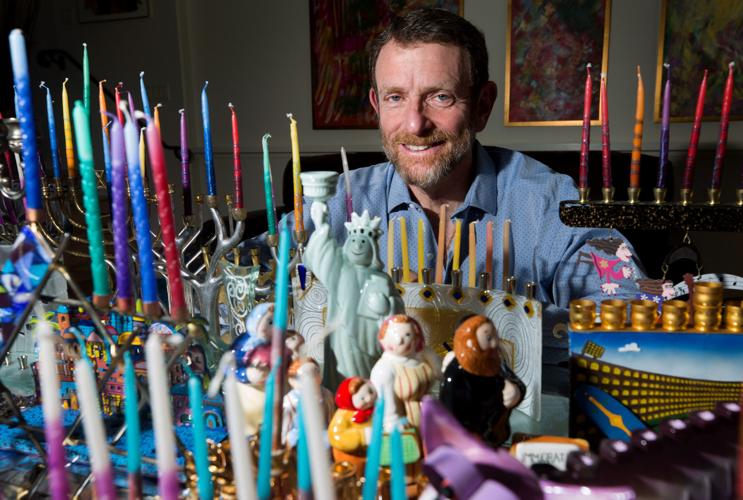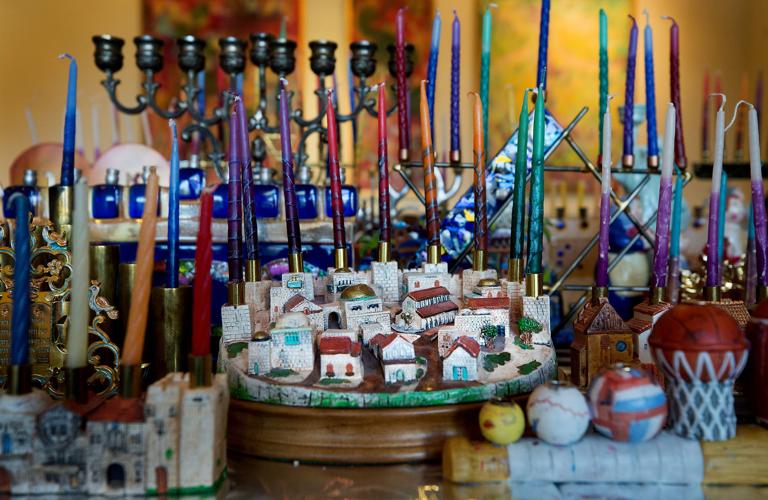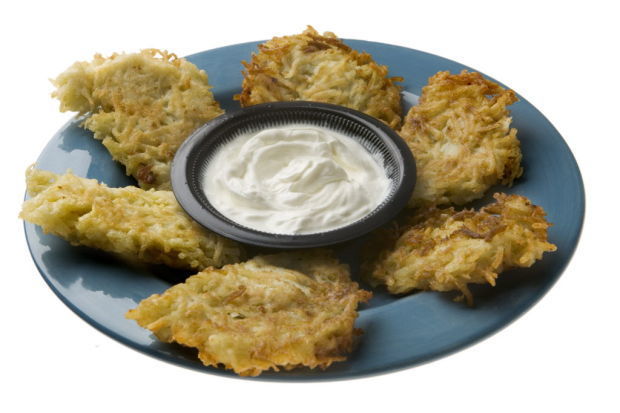Rabbi Samuel Cohon could open a menorah museum.
Cohon, the rabbi at Congregation Beit Simcha on Tucson’s northwest side, has about 100 of the nine-armed candelabras, central to the eight-day Hanukkah (or Chanukah) celebration, which begins Sunday, Dec. 22.
When his three children were growing up, they each had their own menorah. As they got bigger, so did the menorahs, often becoming more and more elaborate.
“There are cheap ones with basketballs and baseballs,” he says. “My daughter had one with ballet dancers on it.”

Rabbi Samuel Cohon says he bought his first menorah at age 23 and has continued to expand on his collection. Hanukkah, also called the “festival of lights,” is all about bringing light to the darkness.
He even has one designed to look like him.
“It’s a little creepy,” he says, “but it was a gift.”
So among his family’s tradition for the festival is the lighting of multiple menorahs.
“Most I’ve had burning at once is 45,” he says.
Makes sense. Hanukkah, also called the “festival of lights,” is all about bringing light to the darkness.
The holiday has its origins in the second century B.C. when the Jewish rebels, the Maccabees, defeated Syria and regained control of Jerusalem. In rededicating the temple, they found they only had enough purified olive oil to light the lamp for one night. Miraculously, it burned for eight nights, allowing time to prepare more kosher oil.
Hanukkah is a minor holiday, says Cohon, but traditions are built up around it, many of them personalized.
His family has a competition that dates back to his grandmother.
“Whose ever menorah burns the longest wins,” he says.
Although, he admits, the competition is a tad rigged. “My son has claimed the one that lasts the longest, so he always wins.”
Tucson’s former Mayor Jonathan Rothschild says his family’s Hanukkah highlight after the lighting of the candles is making and eating potato pancakes, called latkes. His wife, Karen, gives them a southwestern twist by adding green chilies.
That tradition, he says, “is the most fun. And the tastiest.”

Traditional Hanukkah treats dished up include the potato pancakes, latkes, loukoumades, which are deep-fried puffs dipped in honey or sugar, and sufganiyots, or jelly donuts.
Jennifer Selco, director of Jewish Life and Learning at the Tucson Jewish Community Center, remembers being in Jerusalem during Hanukkah when she was a freshman in college.
“I’d walk down the street and everyone had a menorah burning in the window,” she recalls, stressing how moving that was to her.
That memory informs her family tradition. She, her husband and three children each have their own menorah, which are visible through their front window, decorated for the festival.
Her children, all under 4, also love spinning the dreidel, a four-sided top, each side marked with a Hebrew letter.
Cohon’s children, now all grown, made the spinning of the top another competition.
“We have prizes for whose dreidel spins the longest,” he says. “I like to spin it upside down — now that’s a pride issue.”
Food — generally fried with olive oil — is also a big part of Hanukkah, and Selco has a tradition of making latkes a family affair. Music also figures big into her Hanukkah celebrations.
“Growing up, we would have a Hanukkah CD —Cindy Paley’s ‘Chanukah — A Singing Celebration.’”
While that 1988 recording was the go-to music of her youth, Selco has updated tunes for her children.
“There are some fabulous Jewish musicians,” she says. “We make a Hanukkah mix.”
But, ultimately, it’s about the candles.
“It’s bringing out the light in the season of darkness,” says Selco, noting that Hanukkah falls during the darkest days of the year.
“How inspiring that we should bring more light into the world.”







